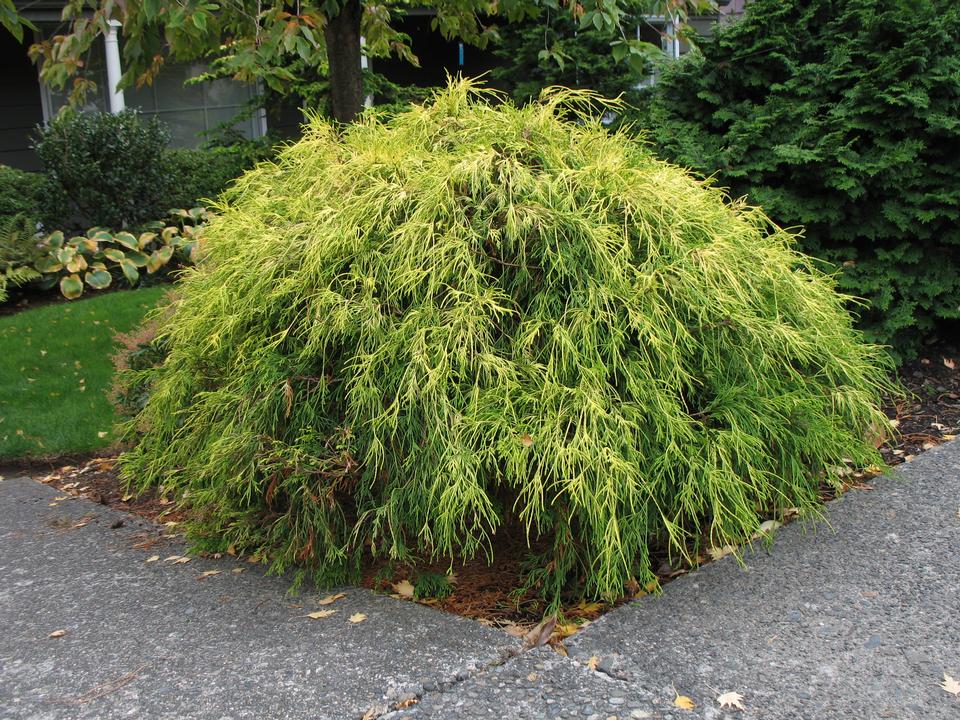Falsecypress, Sawara or Japanese
Chamaecyparis pisifera
Cupressaceae - Cypress
Description
Leaves: Small; scale-like; attached in alternating pairs flattened along and clasping twig; 1/12" to 1/8" long; spreading at the tips; dark green above with whitish markings underneath, but culivars can be bright yellow; evergreen; persist 2 to 3 years; aromatic when crushed.
Twigs/buds: Twigs slender; covered by foliage and horizontally flattened depending on cultivar. Buds very small; indistinct; not useful for identification purposes.
Flowers/fruit: Monoecious. Fruit a leathery cone; 1/4" diameter; round; yellowish-green; 6 to 8 shield-shaped scales with a small bump on each one; matures in one year.
Bark: Fibrous; reddish-brown; shredding; distinctive.
Wood: Important in Japan; wood light colored; very decay-resistant; used for construction and caskets.
General: Native to Japan; not Utah. Not a true cedar or cypress. Prefers moist sites, but does fine on a wide variety of soils, but avoid extreme heat. Moderately shade tolerant.
Landscape Use: A medium- to large-sized tree (40' to 70' tall and 15' to 20' wide), sometimes with a weeping habit. Many ornamental cultivars with a variety of colors and forms. Not common in Utah, but I have a shrub form in my yard in Logan, and also have seen them on the UofU campus. No notable insect and disease problems. Does well on a variety of sites. Zones 4-8.
Cultivars: 'Boulevard', 'Filifera', 'Filifera Aurea', 'Plumosa', 'Plumosa Aurea', 'Squarrosa', 'Squarrosa Minima'.
Characteristics
General
| Family | Cupressaceae - Cypress |
|---|---|
| Cultivar Availability | Yes |
| Hardiness Zone | 4-8 |
| Type | Conifer |
| Utah Native | No |
Growth
| Growth Rate | Medium |
|---|---|
| Mature Height | High |
| Longevity | High |
| Is Good Under Power Lines | No |
| Crown Shapes | Pyramidal |
Ornamental
| Bark | No |
|---|---|
| Fall Color | No |
| Flowers | No |
| Foliage | Yes |
| Fruit | No |
Tolerance
| Shade | Medium |
|---|---|
| Salt | Low |
| Drought | Low |
| Poor Drainage | Medium |
| Alkalinity | Medium |
| Transplanting | Medium |








